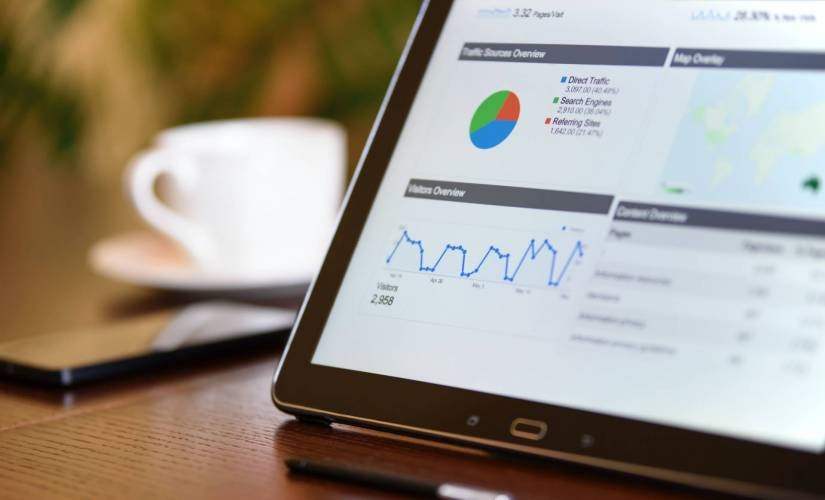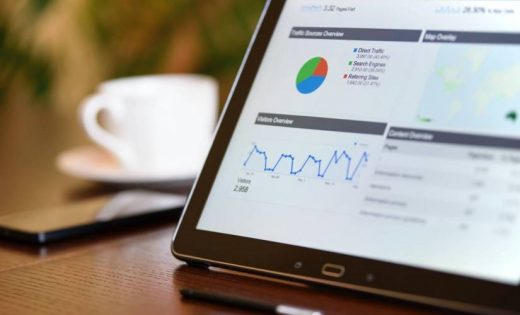Website Traffic Will Become a Defining Metric for Success (Post COVID-19)
Website Traffic Will Become a Defining Metric for Success (Post COVID-19)

Human lives and the well being of Americans will always be the gravest concern in any pandemic. But if you zoom out and look at the big picture, it quickly becomes evident that the devastating impact goes far beyond physical health.
Financially, the COVID-19 pandemic has ravished millions of families. It’s also had a significant impact on thousands of small businesses across hundreds of industries and niches.
Economists are projecting that more than 100,000 small businesses have permanently shut their doors since the pandemic began escalating in mid-March. That represents more than 2 percent of all small businesses in this country.
For millions of other small businesses, the struggle to remain profitable, recoup losses, and grow becomes a very big challenge moving forward. And if it wasn’t already important enough before the virus, a company’s web presence is going to be exponentially more valuable in a post-COVID-19 marketplace.
Why Website Traffic Matters More Than Ever
Traffic has always been an important metric for business owners. If you want to increase revenue, it starts with getting more people into your store. There’s no guarantee that having people in your store will result in sales, but the flip side of the equation is certainly true. (No visitors means no sales, which ultimately means no revenue.)
In a post-COVID-19 world, where people will almost certainly be more likely to shop online than in-person, both brick and mortar and ecommerce brands alike will discover that virtual traffic is the key to being successful.
This means website traffic will be one of the foundational building blocks for all small businesses moving forward. And if you’re serious about boosting traffic, you’ll need to do your homework.
How Leading Business Will Scale Their Traffic
Generating traffic for a website is hard work, but it’s not impossible. It’s something that requires strategy, vision, discipline, and execution. It also requires a willingness to experiment through trial and error. But with that being said, here are some of the tactics leading businesses will use to scale their traffic up over the coming few months and years:
- Invest in Content
Let’s start with something that should be fairly obvious by now, but still gets forgotten. If you want people to visit your site, you need content. Quality content.
Content serves two purposes. First off, it gives you linkable assets that drive traffic to your site. Secondly, it keeps visitors engaged by giving them something to sink their teeth into.
You don’t have to publish content on a daily basis, but you should be generating at least one blog post per week. If you do this over the course of a year, you’ll have a minimum of 50 pieces of content. That’s 50 resources that can be shared and linked to in order to generate a stream of traffic.
- Write Clickable Headlines
Content is great for sharing and disseminating via social media and other offsite platforms. But if you want people to visit your site, you must write clickable headlines.
Clickable headlines are headlines that people are naturally drawn to. They typically do one or more of the following:
- Evoke curiosity
- Create shock or surprise
- Promise value
- Stoke extremely positive or negative emotions
Research shows that the ideal headline length is between 14-17 words. Headlines in this range perform 76 percent better than shorter headlines.
It’s also helpful to stay abreast of the hot search trends in your niche so that you can target these keywords. This will help you push out relevant content at all times.
- Utilize These SEO Tactics
The technical side of traffic generation requires you to invest some time into search engine optimization (SEO). And if there’s one element of SEO that matters more than the rest, it’s backlinks.
There are dozens of strategies for obtaining backlinks – including guest blogging (which we’ll discuss momentarily) – but here are a couple that don’t get nearly enough discussion:
- PBNs. A private blog network – or PBN – is basically a collection of individual and distinct websites or blogs owned by a single individual or organization. And while PBNs sort of fall into a grey area of SEO and link building, they can be effective when used appropriately. Consider partnering with some other businesses in your area to create two or three high-quality websites that can be used to generate leads and drive traffic. (Though it’s important that these websites stand on their own merit and add value as standalone destinations.)
- Link roundups. Many websites and online publications publish monthly, quarterly, and annual link roundup posts. These are basically articles that feature the best content in a particular industry over that period of time. They literally take the best pieces of content, link to the original content, and provide a little blurb about why it’s so great. Find a way to get on these lists and you’ll generate SEO juice and traffic.
- Build and Leverage an Email List
Email is awesome because it’s something you own. That means unlike social media platforms, search engines, ad networks that set their own rules, you have total control and ownership over your email list.
List building is something that you need to be focused on all the time. If you aren’t adding new subscribers to your list every week, you’re missing out on a chance to reach and engage new people on a regular basis.
Once you have an email list with several hundred or thousand subscribers, you can use it to share content, offers, products, and services – all with links back to your website.
- Advertise
While free traffic is the ultimate goal, sometimes you have to pay to play. Whether you have a small or large budget, paid search can help you attract visitors, generating clicks, and ultimately produce conversions.
The great thing about pay-per-click (PPC) ads – which are available on both search and social platforms – is that you only pay when someone clicks on your advertisement and visits your website. This means you never waste money for something you didn’t get in return.
- Get Social
In addition to utilizing PPC ads on social, you can also leverage platforms like Facebook, Twitter, and LinkedIn to generate organic click-through to your site.
The great thing about social media is that you can share content and, as long as people find it interesting, useful, or engaging, it has the potential to get shared and go viral. All it takes is one viral post and you could generate thousands of clicks in one bi spurt.
- Post Content to LinkedIn
LinkedIn is more than a person-to-person networking tool. It’s actually on of the internet’s biggest content engines.
Anyone with a LinkedIn account – hopefully that includes you – has the ability to publish content and share it with connections. And the best part about the platform is that you’re able to republish existing content from your website/blog without any sort of SEO duplicate penalty. Talk about maximizing the value of your content!
- Try Guest Blogging
Finally, let’s talk about guest blogging.
Guest blogging is the process of publishing original content on someone else’s blog. The blogger gets free content for their audience and, in return, typically allows you to plug in a link or two for SEO benefits.
If you’re able to secure enough guest blogging opportunities on websites with high domain authority, this can significantly elevate your website in the Google search rankings.
Building Better Businesses for the Future
Website traffic isn’t enough to make a business successful, but it’s definitely a useful starting point. If you’re uncertain of how to proceed with this information, or don’t have the time/skillset to execute, there are plenty of people who can help. And during a time where a lot of American freelancers and small businesses are struggling, this is a great opportunity to hire someone to help.
The post Website Traffic Will Become a Defining Metric for Success (Post COVID-19) appeared first on ReadWrite.
(50)


